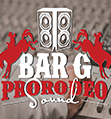BORN FOR THE FIGHT
The Spanish fighting bull, or toro de lidia, is a unique breed of bovine renowned for its exceptional bravery and beauty. The bull’s physical build and natural aggression make this breed appropriate for the bullfight due to its impressive strength as well as its natural instinct to charge (attack). Within the world of bullfighting the bull is seen as the main protagonist of the corrida and the King of the Fiesta, recognized worldwide as a symbol of bravery and resilience as well as the totem of Spanish culture. Origins The origin of the fighting bull can be traced back through the different indigenous bovine breeds dating from the 15th Century, though it was not until the middle of the 18th Century that the fighting bull began to become clearly identifiable through the selective breeding process of bull breeders in Spain. The founding bull breeds were Morucha Castellana, Navarra, Jijona y De la Tierra, Vazquena, Cabrera and Vistahermosa. These breeds not only vary in their physical characteristics, but also in their temperament. In modern times, the predominant bloodline is Vistahermosa, the characteristics of which are considered the most suitable for modern styles of bullfighting Lifestyle In a similar way that cattle are selected and reared for the dairy or meat industries, but in bullfighting, bulls are reared specifically for the bullfight; they are raised on privately owned bull ranches located all over the country. From the day the bull is born it will roam freely; it enjoys not only the privilege of freedom to roam, but also the benefits of a domestic animal, such as a nutritious diet provided by the breeder, and veterinary care when required. Characteristics This magnificent animal is admired and revered for inspiring not only fear but also respect. A toro bravo typically weighs between 900 lbs – 1,400 lbs, and is a highly alert and responsive animal. The bull’s physique is characterized by the distribution of muscle around the neck and shoulders, used to lift and toss with its horns; the length of horns, legs, tail and coloring all vary by breed and bloodline. A bull’s natural behavior both in the wild and in the bullring is to attack anything it perceives as a threat, a reaction usually triggered by movement and proximity. In the wild the bull will fight with other bulls, in disputes over territories and status, or during the mating season. In the arena it is the movement of the bullfighter which attracts the bull to attack instinctively and to charge repeatedly. The role of the bull in the bullfight A significant part of the enjoyment of freestyle bullfighting is an understanding and appreciation of the bulls themselves, given that no two are the same, and not all bulls are considered as ‘successful’ in the bullfight. The ideal behavior of a bull requires not only bravery, but also a number of qualities that facilitate the performance of the bullfighter, and at the same time, make the overall performance more aesthetically attractive. Among these characteristics is the bull’s ‘humility’, which refers to the bull’s positioning of his head as he charges. A bull which lowers its head shows absolute commitment as it attacks, and this allows the bullfighter to perform more fluid and artistic sequences of passes. Apart from ‘humility’ the bull’s movements and charge must be vigorous and consistent if they are to transmit emotion to the audience. The success of the bullfighter depends upon the quality of the bull. Given that this is a wild and unpredictable animal, this quality is an unknown factor until the bull enters the arena and thru time. For this reason, anything can happen in a bullfight, and the quality of the bull is crucial to the outcome.
Retrieved: http://www.aficionados-international.com/general-information/the-spanish-fighting-bull





